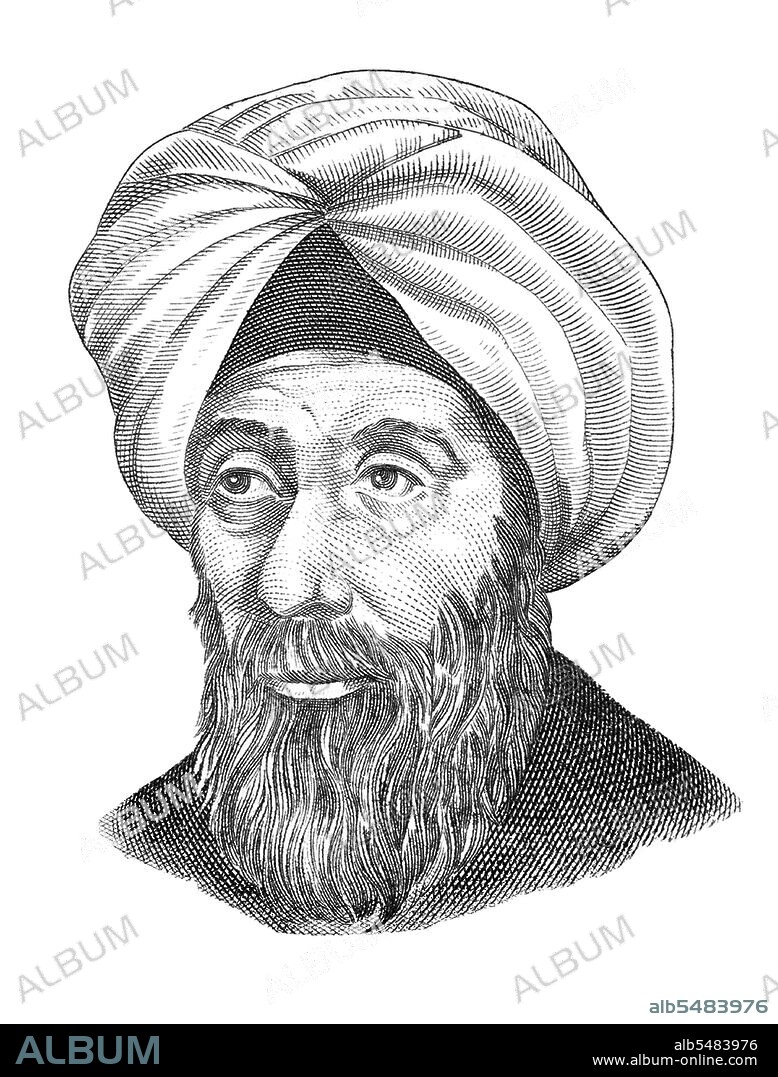alb5483976
Iraq: Posthumous representation of the polymath Ibn al-Haytham, known in Medieval Europe as Alhazen or Alhacen (965-c. 1040). By Sopianwar (CC BY-SA 4.0 License)

|
Add to another lightbox |
|
Add to another lightbox |



Buy this image.
Select the use:

Title:
Iraq: Posthumous representation of the polymath Ibn al-Haytham, known in Medieval Europe as Alhazen or Alhacen (965-c. 1040). By Sopianwar (CC BY-SA 4.0 License)
Caption:
Abu ?Ali al-?asan ibn al-?asan ibn al-Haytham (Arabic: ??? ???? ????? ?? ????? ?? ??????, Persian: ??? ????, Latinized: Alhacen or Alhazen, 965 in Basra – c. 1040 in Cairo) was a Muslim, Persian or Arab scientist and polymath. He is frequently referred to as Ibn al-Haytham, and sometimes as al-Basri (Arabic: ??????), after his birthplace in the city of Basra. Alhazen made significant contributions to the principles of optics, as well as to physics, astronomy, mathematics, ophthalmology, philosophy, visual perception, and to the scientific method. He was also nicknamed Ptolemaeus Secundus ('Ptolemy the Second') or simply 'The Physicist' in medieval Europe. Alhazen wrote insightful commentaries on works by Aristotle, Ptolemy, and the Greek mathematician Euclid. Born circa 965, in Basra, Iraq, he lived mainly in Cairo, Egypt, dying there at age 76. Over-confident about practical application of his mathematical knowledge, he assumed that he could regulate the floods of the Nile. After being ordered by Al-Hakim bi-Amr Allah, the sixth ruler of the Fatimid caliphate, to carry out this operation, he quickly perceived the impossibility of what he was attempting to do, and retired from engineering. Fearing for his life, he feigned madness and was placed under house arrest, during and after which he devoted himself to his scientific work until his death.
Credit:
Album / Pictures From History/Universal Images Group
Releases:
Image size:
3650 x 4805 px | 50.2 MB
Print size:
30.9 x 40.7 cm | 12.2 x 16.0 in (300 dpi)
Keywords:
ALHACEN • ALHAZEN • ART • ARTS • ASIA IMAGE • ASIA PICTURES • ASIA • ASIAN IMAGES • ASIAN PICTURES • ASIAN • ASTRONOMER • ASTRONOMIA • ASTRONOMY • BASRA • CIENCIA • DESIGNING • DRAWING • DRAWN • HISTORIA UNIVERSAL • HISTORIA • HISTORICAL IMAGES • HISTORICAL PICTURES • HISTORICAL • HISTORY IMAGES • HISTORY PICTURES • HISTORY • HISTORY. • IBN AL-HAYTHAM • IRAK • IRAQ • IRAQI • ISLAMIC SCIENCE • LEGEND • PHYSICAL • PHYSICIST • PHYSICS • PHYSIQUE • POLYMATH • PORTAIT • PORTRAIT • POTRAIT • SAVANT • SCIENCE • SCIENCES • SCIENTIFIC • SCIENTIST
 Pinterest
Pinterest Twitter
Twitter Facebook
Facebook Copy link
Copy link Email
Email
